115 Years, 115 Impactful Moments
Click to play USC Viterbi's 115th anniversary trivia game
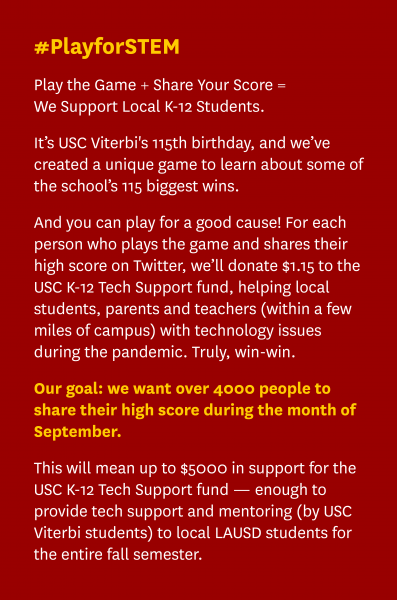 In 1905, USC offered its very first engineering courses out of the physics and mathematics departments.
In 1905, USC offered its very first engineering courses out of the physics and mathematics departments.
One hundred and fifteen years later, the USC Viterbi School of Engineering has a name and a host of accomplishments over the ensuing 11.5 decades.
This past May, Dean Yannis Yortsos, working with USC Viterbi vice deans, chairs, and select senior faculty, sought to identify 115 amazing USC Viterbi accomplishments by faculty, students and alumni over that span of time. This list would span all eight departments, the famed USC Information Sciences Institute and various programs of the school.
This list, like many of its kind, suffers from a clear recency bias. It is by no means the definitive list of all the USC Viterbi School’s noteworthy accomplishments! However, despite these limitations, perhaps it will serve as a helpful primer on what George Bekey, USC Viterbi professor emeritus, once called the school’s “remarkable trajectory.”
Test your knowledge of these USC Viterbi “wins” in a “Who Wants To be A Millionaire”-style interactive game above.
Or, for those who prefer to dive right in…the full list of 115 accomplishments for 115 years awaits.
All Facts
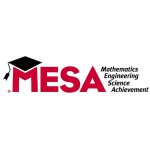
The USC MESA (Mathematics Engineering, Science Achievement) Program is established in 1977.
The program is one of the nation’s most successful efforts to encourage K-12 students from minority/disadvantaged groups to consider science and technology as career paths.
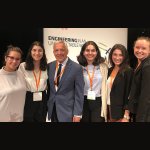
In 2009 USC Viterbi co-creates and launches the National Academy of Engineering Global Grand Challenges Scholars Program, a new education model to prepare engineers to be world changers.
The program has since been implemented at more than 122 universities in the United States and 33 overseas.
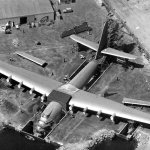
In 1953, Hughes Aircraft contracted with USC to offer master’s-level instruction to its staff engineers under the Cooperative Engineering Program. This partnership grows to include the launch of the university’s first distance education program in 1968-1972.

During World War II, USC became a major center for Engineering Science and Management War Training in 1942. Under the leadership of Dean Robert Vivian, some 50,000 students came through the government-sponsored program, the largest single-campus effort of its kind in the country.
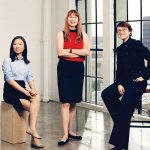
In 2015, USC Viterbi is ranked #1 by U.S. News and World Report in its list of graduate engineering programs with the most women.
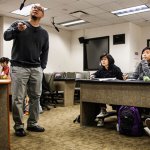
USC Viterbi's Distance Education Network (DEN) is ranked #1 for online graduate engineering programs by U.S. News and World Report in the inaugural rankings (2013) and again as recently as 2017.
The program, building on its nearly 50 year history, remains among the most distinguished in the nation.
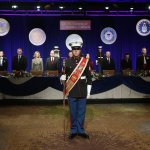
In 2016, USC Viterbi is named best online graduate engineering program for veterans by U.S. News and World Report.
This is bolstered in 2014 by a partnership with the Pentagon for graduate programs for Army officers. USC Viterbi also offers an unlimited number of Yellow Ribbon awards to eligible military candidates.

USC Viterbi's iPodia's program launches in 2009 – a global partnership for shared learning with 13 universities on four different continents.
Also in 2009, USC Viterbi opens its Shanghai office, followed by the India Office in 2011.
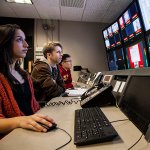
In 1972, the school debuted its pioneering distance education program via the Norman Topping Instructional Television Network, or ITV. Today, that system is known as USC Viterbi’s Distance Engineering Network, or DEN (ranked No. 1 by U.S. News & World Report, as recently as 2017).
Initially, lectures were broadcast via closed-circuit television to remote sites, allowing students to interact via two-way hookup. By 2001, DEN programs are offered completely online.
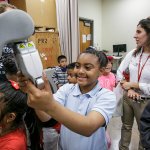
In 1975, the Pre-College Programs Office was established.
Now the K-12 STEM Center, this outreach arm of USC Viterbi works to increase the number of educationally disadvantaged and underrepresented K-12 students who matriculate to four-year universities and graduate with STEM degrees.

In 2003, the Center for Interactive Smart Oilfield Technologies (CiSoft) is established as one of the school's most successful industry-sponsored research centers.
This collaborative research center with support from Chevron has produced more than 100 Ph.D. students and with funding exceeding $45 million.

In 2008, USC trustee and alumnus Andrew J. Viterbi recieved the National Medal for Science.
The highest honor bestowed by the United States for scientific innovation was also given to USC Viterbi professors Solomon Golomb in 2013 and Mark Humayun in 2016.

In 1905, USC offers its first engineering courses out of the physics and mathematics departments.
These include Direct Current Principles and Machinery, Alternating Current Theory and Machinery, Dynamo Laboratory, and a surveying course. Two decades later, the engineering school is founded, with Philip S. Biegler serving as its first dean.
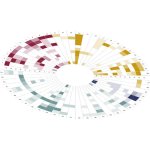
In 2009, Dean Yannis Yortsos coins the term Engineering+, a concept promoting interdisciplinary research, programs and faculty appointments that enable engineering’s powerful role for innovation in the sciences and the professions.
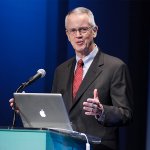
In 2010, USC Viterbi hosts the second ever NAE Grand Challenges Summit.
The event, to promote society’s most pressing challenges, has nearly 1000 attendees and over 50 engineering deans.
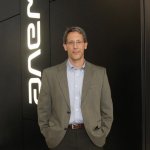
The USC-Lockheed Martin Quantum Computing Center (QCC), led by USC professor Daniel Lidar and ISI’s Robert F. Lucas, launches in 2012. Utilizing the world’s first commercial adiabatic quantum processor, the D-Wave One, USC remains the only university in the world to be hosting and operating a commercial quantum system.
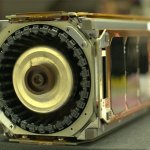
The first commercial space vehicle is launched by Space Exploration Technologies (SpaceX) in 2010, carrying a communications nano-satellite developed in part by ISI and its Space Engineering Research Center (SERC).
Similarly, in 2012, a nano-satellite designed and built at ISI and USC is launched successfully.
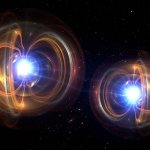
Quantum researcher Federico Spedalieri of ISI witnesses the “entanglement effect” in 2014, demonstrating that the D-Wave system is actually performing quantum processing.

Development of the first packet radio terminal concept is led by Tom Ellis at ISI in 1979.
A forerunner of the modern smartphone, the system proposes communicating by radio with the help of a keyboard and display screen.

In 1974, ISI develops the first portable remote-access terminal, a significant step in the evolution to laptop computers. The terminal is used by the director of the Defense Advanced Research Projects Agency (DARPA), which supports ISI and the burgeoning ARPANET.
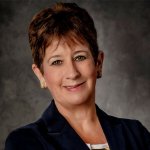
ISI partners with UC Berkeley on Cyber Defense Technology Experimental Research (DETER) in 2004, a major cybersecurity testbed.
Led by ISI’s Terry Benzel, DETER has spun off three innovative new testbeds, three international partner testbeds, and won a DHS Award in 2017.
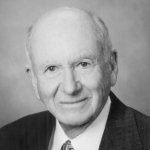
In 1971, Keith Uncapher, who heads RAND Corporation's computing group, approaches USC about creating a computer science institute, and the Information Sciences Institute (ISI) is launched five days later.
ISI, known as USC’s “crown jewel” research institute, has been led by prolific scientists such as Herbert Schorr and Prem Natarajan, who led the expansion of ISI to Arlington, VA, and Waltham, MA, respectively, and Craig Knoblock, the current ISI Michael Keston Executive Director.
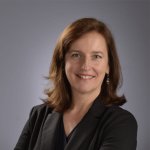
Pegasus software, whose development is led by ISI's Ewa Deelman, is instrumental in detecting gravitational waves in 2016, contributing to a Nobel Prize.
The long-awaited discovery, predicted by Einstein’s Theory of Relativity and made by Laser Interferometer Gravitational-Wave Observatory physicists, is among hundreds of projects and millions of workflows managed with Pegasus.
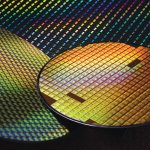
In 1981, ISI's Danny Cohen creates the breakthrough Metal Oxide Semiconductor Implementation Service (MOSIS).
Likely the world’s first e-commerce site, MOSIS slashes chip production costs by consolidating multiple customers’ projects onto shared wafers.
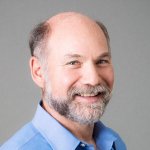
In 1997, ISI's Carl Kesselman, in partnership with Argonne National Laboratory and University of Chicago colleagues, creates grid computing, the prototype for the now-standard Globus open-source software.
Grid computing becomes fundamental to genetics and other data-intensive research, and has so far contributed to a Nobel Peace Prize and two Nobel Prizes in Physics.
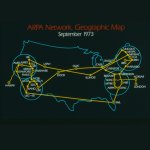
USC ISI designs an interface for ARPANET in 1972, which later becomes the basis of the internet.
Over the next several decades, ISI plays a pivotal role in creating and managing ARPANET/internet, including its core concepts, technical standards, and ongoing functionality.

The internet's pivotal Domain Name System (DNS) is invented by ISI researcher Paul Mockapetris in 1983.
The DNS works as a phone book directory for the internet, automatically translating text addresses, which humans can understand and remember, to numerical addresses that computers can understand.
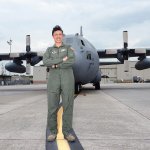
In 2016, alumna Lt. General Stayce D. Harris becomes the first African American woman to receive the rank of three star general in the U.S. Air Force.
Lt. Gen Harris served as Inspector General of the Air Force and in 2019 received the Institute of Industrial and Systems Engineering (IISE) Captains of Industry Award.
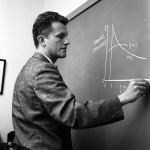
In 1988, the USC Systems Architecting and Engineering program was created by ISE faculty member, Eberhardt Rechtin, the father of the NASA Jet Propulsion Lab Deep Space Network.
It becomes one of USC Viterbi’s most important DEN programs serving aerospace industries.

In 1999 and 2003, the Daniel J. Epstein Department of Industrial and Systems Engineering establishes two nationally-funded interdisciplinary research centers, the National Center for Metropolitan Transportation Research (METRANS), and the Center for Risk and Economic analysis of Terrorism Events (CREATE).
CREATE becomes the Department of Homeland Security’s first University Center of Excellence.
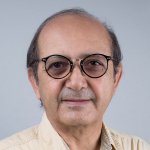
In 2006, The History Channel selects Berok Khoshnevis' Contour Crafting method of robotic 3-D printed construction as one of its top 25 inventions for the network's Modern Marvels program.
The technology was selected from over 4000 candidates by The History Channel and the National Inventors Hall of Fame.
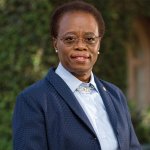
In 2018, alumna Wanda Austin becomes the first female and first African American president of USC.
She previously served as CEO of the Aerospace Corporation and as a research faculty member in the Daniel J. Epstein Department of Industrial and Systems Engineering. In 2015 she was selected by President Barack Obama to serve on the President’s Council of Advisors on Science and Technology.
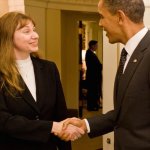
Three USC Viterbi professors have received the Presidential Award for Excellence in Science, Mathematics, and Engineering Mentoring, established by the White House in 1995:
Maja Matarić, a pioneer of socially assistive robotics (2011); John Slaughter, noted for his education research in diversity and inclusion (2012); and Gigi Ragusa, whose research interests include engineering education and innovation and college access for first-generation college students (2019).
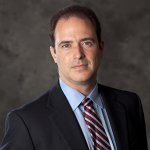
In November 2017, the John D. O’Brien Nanofabrication Lab, a world class "machine shop for nanotechnology" is dedicated to the memory of the school's first executive vice dean, who passed away earlier that year.
Enabled by an anonymous gift, the facility gives students and faculty the ability to develop novel biomedical diagnostic and implantable devices.
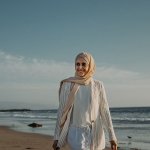
Since 2009, USC Viterbi faculty and doctoral students have won 14 MIT TR35 Awards.
The prize honors the world’s top innovators under 35 whose technical work promises to shape the coming decades. Ten of these winners are female engineers.
Click to view the TR35 Honorees
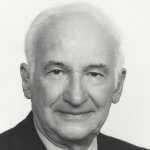
51 members of the National Academy of Engineering (NAE), the most distinguished honor in the discipline of engineering, have been affiliated with USC Viterbi, since the founding of the NAE in 1964.
Among them is Simon Ramo, a founding member of the NAE, who joined USC Viterbi in 2008 as Presidential Chair and Professor of Electrical Engineering.
Click to view names of NAE members affiliated with USC Viterbi
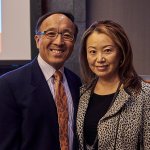
In 2016, the Min Family Challenge (MFC) is established through an endowment by alumnus Bryan Min and his wife, Julie Min, to place USC Viterbi students at the epicenter of the world’s most pressing issues.
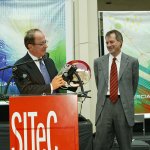
In 2004, with a donation by trustee Mark Stevens, USC Viterbi establishes what is today known as the Stevens Institute for Innovation — the largest naming gift to establish a technology commercialization institute at an engineering school.

USC Viterbi was selected by the National Science Foundation in 2014 to lead a regional hub for start-ups in Southern California: Innovation Node-Los Angeles.
At the time, it was one of only seven such designated sites in the United States, building on USC Viterbi entrepreneurial strength represented by MEPC, Startup Garage, and the Min Family Challenge.
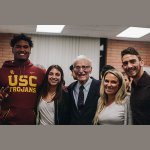
In 1984, Al Dorman, M.S. CE '62, became the founding chairman and first CEO of AECOM Technology Corp, a top-ranked engineering design firm that generated over $20 billion operating in 100 countries in 2019.
Dorman’s most famous early work was the design and construction of Disneyland.
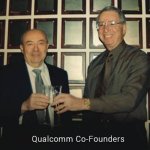
Co-founded by Andrew Viterbi (Ph.D. EE ’62) in 1985, Qualcomm becomes one of the foremost developers of wireless telecommunications products and services; became world’s leading mobile chipset provider in 2007.
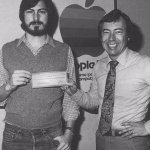
In 1977, A.C. “Mike” Markkula Jr. (B.S. EE ’64 and M.S. EE ’66) becomes the co-founder and first investor in Apple. He plays a critical role in helping to build Apple into a Fortune 500 company in less than five years.
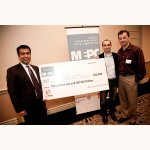
The Maseeh Entrepreneurship Prize Competition (MEPC) becomes one of the first business plan competitions at an engineering school in 2010 after an endowment from entrepreneur Fariborz Maseeh.
Second Spectrum, the 2013 victor, is currently the official tracking and analytics provider for the NBA, MLS and Premier League.
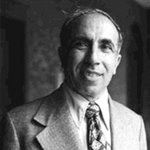
Between 1963 and 1968, Dean Zohrab Kaprielian hires "The Magnificent Seven:" Solomon Golomb, Bob Scholtz, Irving Reed, Charles Weber, William Lindsey, Lloyd Welch and Bob Gagliardi.
This group of electrical engineers founded the famous USC Communications Sciences Institute in 1982.
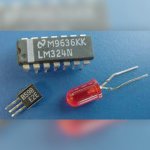
A successful USC proposal to the Joint Services Electronics Program in 1962 helped transform USC into a major research university.
The catch was (then chair, future dean and provost) Zohrab Kaprielian did not have sufficient faculty to do the work. He took the possibility of this award to President Norman Topping and obtained authorization for 10 new faculty positions. USC’s selection was the catalyst for the two decades of dramatic growth and development that were to follow, not only in electrical engineering, but all aspects of the solid-state sciences on the campus.
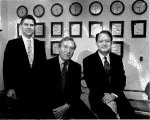
Amid intense competition, USC engineering wins its first National Science Foundation-funded Engineering Research Center in 1996, the Integrated Media Systems Center (IMSC). The center is lead by future dean, Provost and President, C.L. Max Nikias.
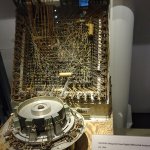
In 1950, Irving Reed and associates demonstrate Northrop’s MADDIDA, one of the world’s first digital computers, to John von Neumann at Princeton.
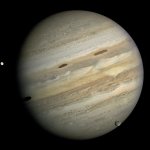
In 1979, Voyager I arrives at Jupiter and begins sending back striking images thanks to basic coding by Andrew Viterbi and error coding by Irving Reed and Gus Solomon.

In 1955, Sol Golomb publishes a classic paper on shift register sequences, key to creating digital signals that can be easily detected in noisy environments.
The basis of this research was cited in Prof. Golomb’s U.S. National Medal of Science.

In 1959, Irving Reed and Gustave Solomon submit the paper establishing the Reed-Solomon codes. Decades later, the codes continue to fix intractable errors in technologies today. Used in everything from satellite communications to QR codes to your home internet connectivity.
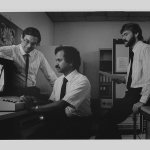
H.C. Andrews and William K. Pratt pioneer the JPEG compression standard, allowing images to be transmitted over the Internet. The Signal and Image Processing Institute (SIPI) is founded in 1972.
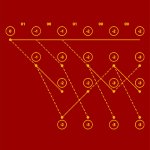
In 1967, alumnus Andrew J. Viterbi publishes a paper describing what later became known as the “Viterbi Algorithm,” the theoretical basis for worldwide cellular communication.
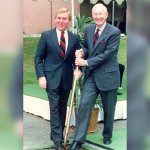
Under the leadership of Dean Len Silverman, the Howard Hughes Electrical Engineering Building and the Charles Lee Powell Hall buildings are established. The buildings provide a home for the systems and electrophysics subsets of the Ming Hsieh Department of Electrical and Computer Engineering.

In 1992, USC Viterbi’s position as a photonics research center was strengthened by the dedication of two laboratories: The W.M. Keck Foundation Photonics Reserach Laboratory and the Charles Lee Powell Photonics Instructional Laboratory.
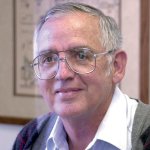
In 1996, Professor Bob Scholtz founded the Ultrawideband Radio Laboratory (UltRa Lab), a highly influential lab, which, for nearly a quarter century, has promoted the study of ultra-wideband radio technology.
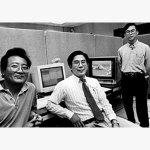
Between 1995 and 2020, Jay Kuo and his alumni contributed immensely to the evolution of MPEG compression standards for video transmission via the Internet.

In 1975, USC Viterbi established the Minority Engineering Program (now the Center for Engineering Diversity).
USC thus became the first private university in California to fund a program focused on the recruitment, retention, and graduation of African American, Hispanic, and Native American students.

In 2019, the incoming undergraduate engineering class was fifty percent women.
A historic first for engineering at USC, the school also had nearly 2,000 women enrolled in its master’s and doctoral programs in 2019, leading the nation.
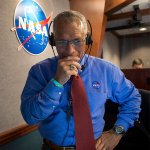
In 2009, then President Barack Obama nominated Charles F. Bolden Jr. as NASA administrator.
The former astronaut, retired Marine general, and USC Viterbi alumnus became the first African American to hold this position.
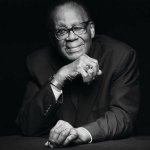
In 1980, John Brooks Slaughter, now a USC Viterbi professor, became the first African American director of the National Science Foundation.
His distinguished career has included service as chancellor of the University of Maryland College Park and 11 years as president of Occidental College where he helped shape the college’s current mission and make it one of the most diverse liberal arts colleges in the country.
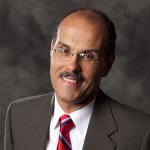
In 1990, Aluizio Prata, who specializes in electromagnetic radiation and antennas for radio communications, is believed to be the first Hispanic American appointed to the tenure track with primary appointment in engineering at USC Viterbi.
He later became the first Hispanic American to become tenured in engineering.

In 1981, Elsa Garmire, an early pioneer in laser technology and a non-linear optics expert, became the first woman to become a tenured full professor in the school’s history.
She later became the first woman to hold an endowed chair in engineering. A member of the National Academy of Engineering (NAE), she left USC in 1995 to serve as dean of the Thayer School of Engineering at Dartmouth College.

USC’s Women in Science and Engineering (WiSE) Program is established in 2000.
The program has facilitated the hiring and development of 37 tenure-track and tenured women in engineering. In 2005, Women in Engineering (WIE) was established to provide professional and academic services to female students of the USC Viterbi School.
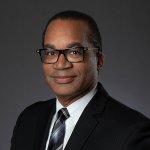
In 1993, Timothy Pinkston became the first African American appointed to tenure track at USC Viterbi.
He subsequently became the first African American to be promoted to full professor and be appointed as a vice dean at USC Viterbi. In 2019, Stacey Finely became the first African American woman to receive tenure in USC Viterbi history. Professor Finely launched the Center for Computational Modeling of Cancer. Both were the first African-American faculty at USC Viterbi to receive endowed chairs.
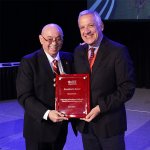
In 2017, the American Society for Engineering Education (ASEE) honored USC Viterbi with the prestigious President’s Award.
Presented to Dean Yannis Yortsos for his efforts in creating the ASEE’s Deans Diversity Pledge, which by then numbered 210 signatory schools. In 2016, Dr. Brandi Jones became USC Viterbi’s first vice dean for diversity and strategic initiatives.
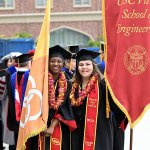
In 1922, Maude Milnes, a civil engineer, became the first woman to receive a USC engineering degree.
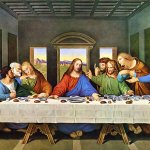
In 2009, Professor Costas Sioutas and his team played an integral role in in saving Leonardo Da Vinci’s masterpiece, “The Last Supper,” from Milan’s air pollution by developing state-of-the-art aerosol technologies to assess the toxicity of particulate matter air pollution.
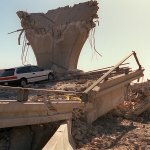
After the devastating Northridge earthquake in 1994, USC civil engineers, including Professor Victor Weingarten, developed new finite element techniques to simulate steel-and-concrete, beam-column structural connections and their potential failure, a real benefit to developers.

In 1970, the same year that the Nixon administration created the Environmental Protection Agency (EPA), USC Engineering lauched the Environmental Engineering Program, among the first programs of its type in the country
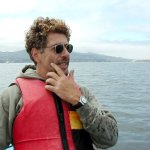
In 1998, Costas Synolakis, founder of the USC Tsunami Research Center (TRC), and his team developed cutting-edge tsunami modeling software used by leading government agencies like the National Oceanic and Atmospheric Administration, or NOAA for real time operational warnings. Most tsunami hazard maps in the western US were produced by the same technology.

In 1908, USC awarded a degree in civil engineering, its first engineering degree.
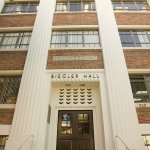
The first engineering building on the USC campus was dedicated in 1940.
The 28,000-square-foot Engineering Building (now Biegler Hall) cost $86,000. Seventeen years later, the university’s first computer was installed there.
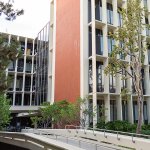
In 1961, the Olin Foundation gifted $2.3 million to USC for construction of Olin Hall, the first major gift in USC's $106-million fundraising campaign.
Under the leadership of dean Alfred C. Ingersoll, this partnership continued with Vivian Hall of Engineering and Materials Science in 1967 — constructed with another $2.7 million grant from the Olin Foundation.
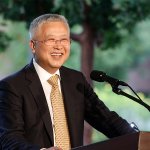
Launched in July 2010, Ming Hsieh's second transformative gift established the Ming Hsieh Institute for Research on Engineering-Medicine for Cancer, fueling a revolutionary collaboration between the USC Viterbi School and the Keck School of Medicine of USC.
The gift created a permanent endowment to support collaborative research in the field of nanomedicine for cancer.
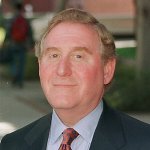
Ronald Tutor Hall, a “home” for engineering undergraduates, opens in 2005. The six-story, state-of-the-art facility houses all student services and student organizations.

With its fountains, statue of Neil Armstrong and outdoor meeting spaces, the Epstein Family Engineering Plaza (formerly Archimedes Plaza), completed in 2014, is a central gathering place for faculty, students and staff.
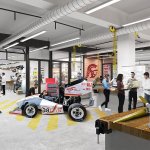
The Baum Family Maker Space is established in summer 2020 for undergraduate student invention.
This new facility positions USC Viterbi as a leader in hands-on engineering learning for students.
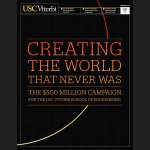
In 2019, USC Viterbi concluded its ambitious $500 million fundraising initiative (officially launched in 2013), resulting in widespread impact to the school, including 58 new endowed scholarships, 19 endowed faculty positions.
This came on the heels of the $300 million “Destination: The Future” initiative (2001-2008) that named the school and half of its departments.

Historic naming gifts - USC Viterbi is the first U.S. engineering school with four named departments:
The Daniel J. Epstein Department of Industrial and Systems Engineering (2002), the first named department at USC; the Mork Family Department of Chemical Engineering and Materials Science (2005); the Ming Hsieh Department of Electrical and Computer Engineering (2006); and the Sonny Astani Department of Civil and Environmental Engineering (2007).
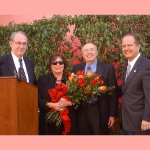
In 2004, the USC School of Engineering is renamed as the USC Andrew and Erna Viterbi School of Engineering.
The gift — the largest ever to an existing school of engineering — is from from Andrew J. Viterbi, ’62, who co-founded wireless technology company Qualcomm, and his wife, Erna.
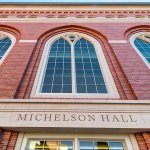
In January 2014, a new epicenter for convergent biosciences is revealed at USC.
The first gift, from Gary and Alya Michelson, established the Michelson Center for Convergent Bioscience (the largest building on the University Park Campus). Six years later, Allen and Charlotte Ginsberg’s donation established the Dr. Allen and Charlotte Ginsburg Human-Centered Computation Building, designed to also house the Department of Computer Science. These two visionary gifts build upon the wet labs in nearby Irani Hall to form a “Convergence Plaza,” where engineers, scientists and doctors can come together to tackle the most pressing issues in healthcare.

In 2019, USC computer science students continued their winning streak in the International Collegiate Programming Contest.
The students won first place over ninety regional teams including CalTech, UCLA, UCSD, and Harvey Mudd, winning what has become known as “the programming Olympics” a total of six times in the last ten years.
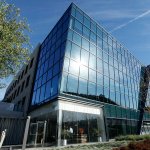
In 1999, the USC Institute for Creative Technologies was established with funding from the US Army to develop award-winning advanced immersive experiences.
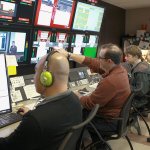
In 2020, USC computer science earned the top spot in the U.S. News & World Report (USNWR) rankings for best online master’s programs in information technology for the eighth consecutive year, while USC Viterbi graduate programs consistently ranked in the top 10 in the USNWR.
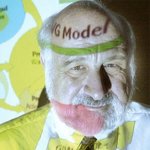
During the ’90s, Michael Arbib led the development of Neural Simulation Language (NSL) to model behavior and thought, including realistic modeling of macroscopic brain structures.
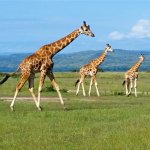
Milind Tambe pioneers “AI for Good,” using AI to protect U.S. ports, airports and infrastructure from terrorists. The technology was also used as part of the largest global deployment of predictive AI to thwart poachers and protect endangered animals.
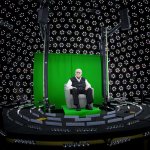
Now debuting at the Smithsonian, the New Dimensions in Testimony at ICT, in partnership with USC Shoah, is the world’s first ever re-creation of interactive, 3D avatars of Holocaust survivors for future generations.
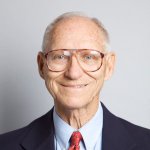
In 1981, Barry Boehm created the now-standard “constructive cost model,” a model for estimating effort, cost and schedule of software projects.
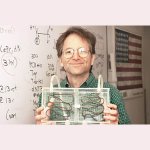
In 1994, Leonard Adleman, who coined the term “computer virus,” invented DNA computing, which involves performing computations using biological molecules rather than traditional silicon chips.
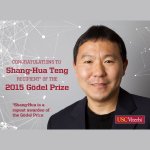
An internationally renowned theoretical computer scientist, Shanghua Teng twice received prestigious ACM Gödel Prizes, in 2008 and 2015, for his work in smoothed analysis of algorithms and nearly-linear-time Laplacian solvers.
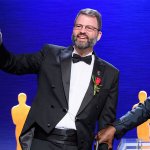
Movie magic! In 2010, Paul Debevec received an Academy of Motion Picture Arts and Sciences Scientific and Engineering Academy Award for creation of photoreal digital actors. In 2017, alumnus Parag Havaldar (Ph.D. ’96), who still teaches part-time at USC, won an Academy of Motion Pictures Arts and Sciences Award for Technical Achievement.
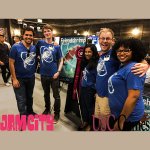
USC Games, a joint initiative between the USC Viterbi School of Engineering and the USC School of Cinematic Arts, has been recognized as the No. 1 games program in North America since 2009 (Princeton Review).
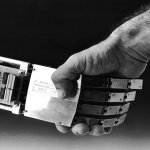
Equipped with the ability to adapt to arbitrary shapes without any external control, pioneering roboticist George Bekey co-created the world’s first five-fingered robot in 1977—the first able to give a true handshake.
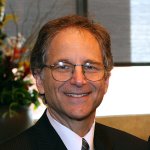
In 1977, Leonard Adleman helped invent the RSA cryptography system, the world’s most widely used public-key cryptography method for securing communication on the internet, which earned him the famed Turing Award.

In 1998, thanks to a generous donation by Alfred Mann, USC established the Alfred E Mann Institute for Biomedical Engineering (AMI) to transform scientific discoveries into useful products.
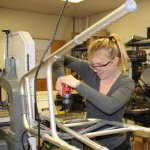
In 1976, USC established the Department of Biomedical Engineering, the first such program in the state to offer bachelor, master and Ph.D. degrees.

The USC Biomedical Simulations Resource (BMSR), USC Viterbi’s longest continuously funded NIH-research center, has since 1985 produced software like ADAPT, used in the development of Herceptin – the first biologic developed for the treatment of breast cancer, as well as Rituxan for treating non-Hodgkin’s lymphoma.
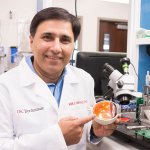
After 25 years of research, Mark Humayun’s Argus 2 device became in 2013 the first FDA approved artificial retina in the United States to restore sight to the blind.
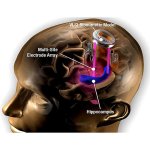
In 2011, Professor Ted Berger’s brain implant became the first medical device in the world to restore lost memory function and strengthen recall. The MIT Technology Review later named it as one of the “10 Breakthrough Technologies of 2013.”
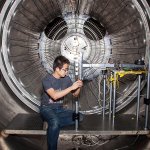
In 2009, USC became the first and only university to offer bachelor, master and doctorate degrees in astronautical engineering.
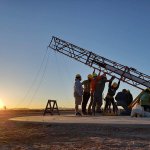
In April 2019, the USC Rocket Propulsion Laboratory, became the first student group to launch and recover the world’s first entirely student-designed and fabricated rocket into outer space.
Traveler IV reached 340,000 feet and set the student world altitude record.
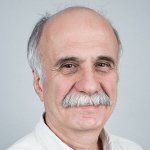
Professor Mike Gruntman was a member of the IBEX spacecraft team that in 2008, for the very first time, mapped the interstellar frontier of the solar system.

Twelve USC Viterbi alumni have journeyed beyond Earth’s atmosphere as NASA astronauts.
These include: Charlie Bolden, former NASA administrator, who flew on four space shuttle missions; and Nancy Currie-Gregg, who flew in four space shuttle missions, accruing 1,000 hours in space. In addition, Professor Garett Reisman spent 95 days aboard the International Space Station after which he returned to Earth aboard the Space Shuttle Discovery in 2008. Professor Paul Ronney, now AME department chair, was selected as an alternate payload specialist astronaut. His experiments flew on two Columbia Space Shuttle missions in 1997 (the mission he was backup for) and one in 2003.
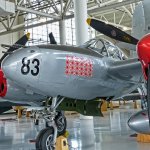
USC Engineering secured its first major research contract in 1944 in the amount of $10,000 from Lockheed Aircraft for studies of spot-welding aluminum alloy.

In 1974, Fred Browand published the classic paper that builds on work by Richard Kaplan and Ron Blackwelder on how to reduce air drag on vehicles, research that continues to influence vehicle design to this day.
Cited 1400 times, it was the first to show experimentally that two or more vortices in fluid flows have tendency to merge to form larger vortices. This concept continues to be utilized today to control the growth of the shear layers, reduce noise from jets and control the mixing within shear layers.

Terence Langdon, who served as a professor in three USC departments, elongated metals by a record 7000% in the 1980s.
His research focused on creep, superplasticity and UFG materials and he published over 1,000 peer-reviewed papers.
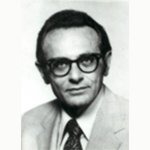
In 1964 Janos (John) Laufer, left the Jet Propulsion Laboratory to found and chair the USC Viterbi Department of Aerospace Engineering.
Laufer was renowned for his work in fluid mechanics and died in 1983.
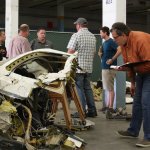
USC Viterbi's Aircraft Investigation Lab is among the best in the world.
For over 60 years, USC professors have taught pilots, aircraft investigators, and aviation officials about why planes crash and how to prevent these failures through the USC Aviation Safety and Security Program. This program operates around the globe, teaching how to identify hazards in aircraft systems and take action to prevent them from manifesting into an accident.
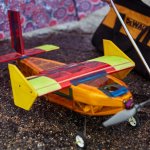
The USC AeroDesign Team won the AIAA Design/Build/Fly competition in 1998, 2014, 2017, and 2020.
It also won best report three years in a row (2018, 2019, 2020). The contest is an annual opportunity for student teams to design, build and demo the flight capabilities of an unmanned, electric powered, radio controlled aircraft, specific to a particular mission profile released by the AIAA each year.
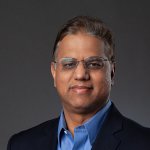
The Center for Advanced Manufacturing launched on February 24, 2017.
The 6,000-square-foot center just off the University Park campus houses the latest technologies and fosters innovative research aimed at advancing additive manufacturing, digital manufacturing, automation and smart manufacturing. A recent project aimed at COVID-19 is a disinfection robot named ADAMMS.
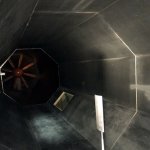
The Dryden Wind Tunnel, the oldest operational wind tunnel in the U.S., is a truly historic facility reaching back to the development of foundational studies in aerodynamics dating from the 1918.
It was transferred to the Department of Aerospace and Mechanical Engineering from National Institute of Standards and Technology.

In 1988, Patrick Huerre and Larry Redekopp, professors in the Department of Aerospace and Mechanical Engineering, published a seminal work in “Phys. Rev. Letters” defining the fundamental mechanism for onset of global instability and frequency selection criteria in hydrodynamic flows.
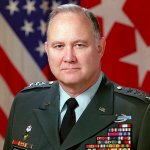
In 1964, Norman Schwarzkopf, future commander of Allied forces in the 1991 Gulf War, earned his master of science degree in mechanical engineering at USC.
Schwarzkopf was a highly decorated soldier who demonstrated notable leadership in the Vietnam War; in addition, he planned and led Operation Desert Storm as part of the Gulf War.
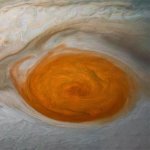
In 1976, USC Viterbi professors Tony Maxworthy and Larry Redekopp published a paper in Nature explaining Jupiter’s Great Red Spot as a solitary wave in the Jovian Atmosphere.
Maxworthy and Redekopp were long-time collaborators in the Department of Aerospace and Mechanical Engineering, largely focusing on fluid mechanics, from the microscale processes in jets to the macroscale of oceans and atmospheres in space.
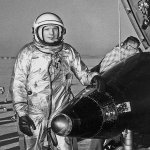
In 1970, Neil Armstrong, who was the first person to step foot on the moon during the 1969 NASA Apollo mission, graduated from USC with a master of science degree in aerospace engineering.



